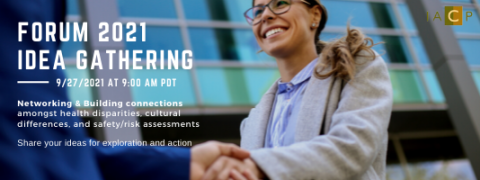
In my memories of childhood, I remember my father saying: He who whispers down a well, about the goods he has to sell, will never make as many dollars, as he who climbs a tree and hollers.[1]
As a child, I could see the tree. It was an oak tree, broad and tall. I could see the well. It was made of stone blocks and had a bucket on a rope. I could even see someone in the tree shouting. I could see it. I thought I understood it. But I never applied it.
In many ways the Collaborative Practice movement stands at the intersection of the well and the tree.
We have created a community of like-minded practitioners who see the wisdom in finding collaborative solutions to traditionally litigated problems. We have formed practice groups to exchange information and pool resources. We host conferences including the IACP Forum on an international level and in my home of Florida, the FACP Conference on a statewide level. In some jurisdictions, including Florida, we have been able to enact legislation recognizing the Collaborative Process. However, we are still only whispering down a well.
A large portion of our community are professionals engaged in representing individuals progressing through a dissolution of marriage or related family law matters. The subject matter at our conferences focuses on issues related to contested family matters. Our successes such as enacting legislative change to recognize the Collaborative Process has been in the area of family law.
The perception from non-Collaboratively trained persons is that the Collaborative Process is something limited to divorce cases without general application. As a result, people with disputes outside of the family law area that could benefit from participation in the Collaborative Process never consider this approach to dispute resolution. Their options are self-limited to mediation, arbitration, and litigation.
My law partner is a civil trial lawyer with an extensive background in commercial litigation. His commercial litigation background influences his approach to dispute resolution with ultimately resolutions being weighed against perceived BATNAs and WATNAs.[2] This approach couches dispute resolution in the context of what could happen in court. But he often tells a story from the earlier days of his practice when he was involved in a complex real estate development dispute. The parties had engaged in extensive discovery and litigation with no resolution in sight. The case was ultimately resolved, but not through the litigation which had driven the matter. The dispute resolved when it was agreed to name an aspect of the development after one of the other party’s principal investors. The recognition of the interests of that one critical person in a complex real estate development dispute led to its resolution. The civil trial lawyers in that case found an interests-based resolution to what was a commercial litigation dispute. An accidental application of a Collaborative principal.
We need to spread the word outside of the family law community that the Collaborative process is a viable option to resolve non-family law disputes. The resolution of cases through mediation is not limited to only family law matters. Why should the ability to resolve disputes Collaboratively be limited to family law matters?
The more we tell other practitioners about Collaborative Practice, the more we can plant the proverbial seed that this is not only a family law option. The more those other practitioners hear about Collaborative Practice, the more they are likely to be open to applying those principals in their own cases. Some may even be willing to apply the Collaborative Practice model toward resolution of probate disputes, landlord/tenant disputes and potentially even commercial litigation disputes. And even if those colleagues never become Collaboratively trained, our conversations with them may lead to them telling their clients, their colleagues, their friends, and their families about the Collaborative approach toward dispute resolution.
Our goal should be to spread the word as far as possible that the Collaborative approach to dispute resolution is a valid and viable option. We should want the Collaborative Process to be one of the initial options that people contemplate in the resolution of disputes that otherwise would have proceeded to litigation. The first time that a potential client hears favorably about the Collaborative Process should not be when they sit in our offices for a consultation.
In short, we should be spreading the word about the Collaborative Process to as many people as possible. We should be spreading the word to people who are not already in our community of like-minded professionals engaged in family law practice. We should be spreading the word to people who may never have need of a professional to help resolve a family law dispute, so that they will tell others, who in turn will tell others. We need to stop whispering down the well and climb the tree to shout as far as our voices will carry.
-------------------------------------------------------------------------------------------------------------------
Matthew E. Thatcher is a partner at the Solomon Law Group, P.A. in Tampa, Florida. Mr. Thatcher is Board Certified in Marital and Family Law by the Florida Bar. Mr. Thatcher is a Co-Chair for Next Generation Divorce Practice Group in Tampa, Florida and a Co-Chair for the Florida Academy of Collaborative Professionals Outreach Committee. Mr. Thatcher is also a Fellow in the Inaugural 2019-2020 Class of the Florida Academy of Collaborative Professionals Leadership Institute.
[1] HRH Edward of Wales (1935) https://marksfavquotes.blogspot.com/2007/03/effective-marketing.html
[2] B.A.T.N.A. is a Best Alternative to a Negotiated Agreement. W.A.T.N.A. is a Worst Alternative to A Negotiated Agreement.